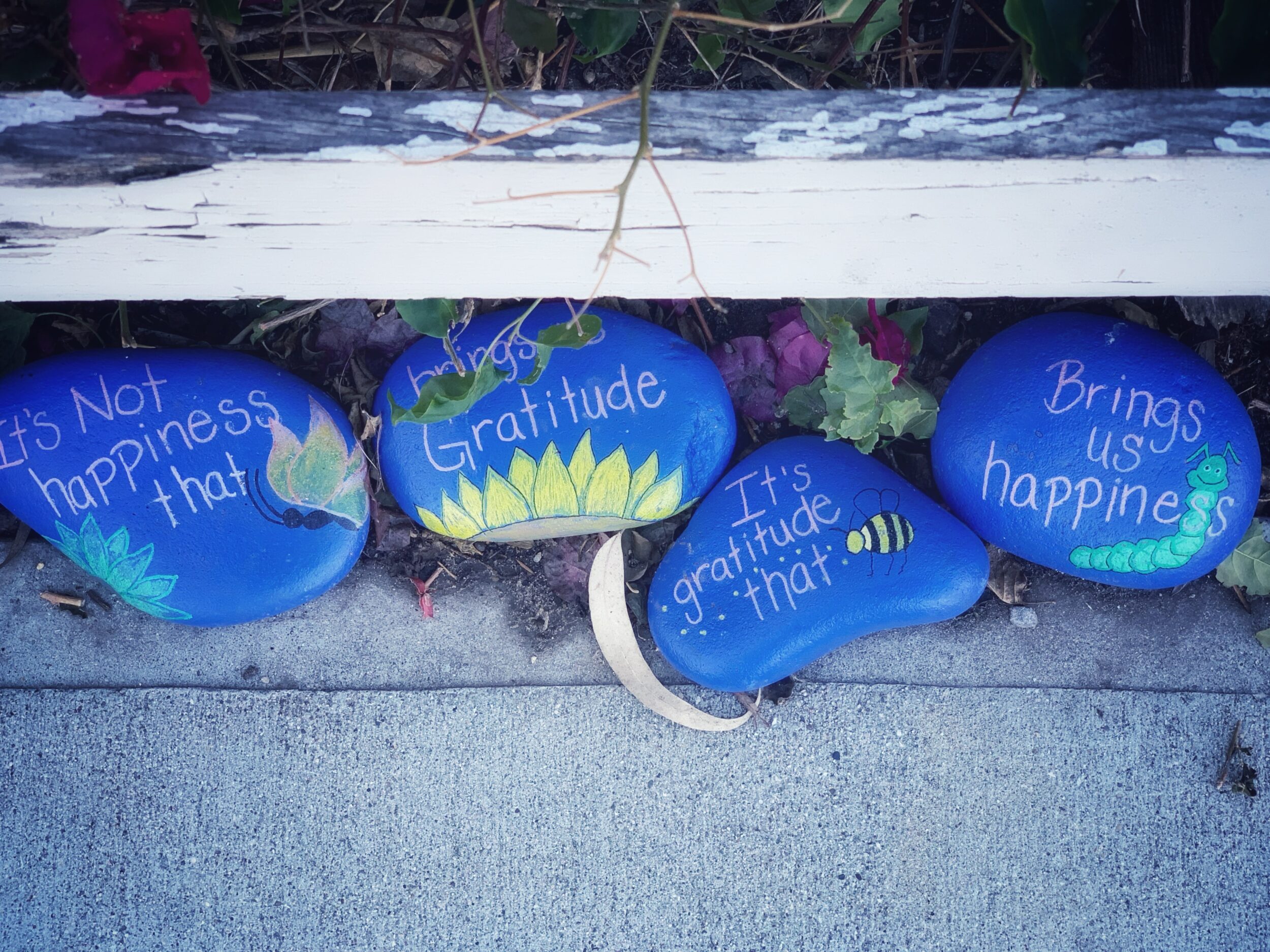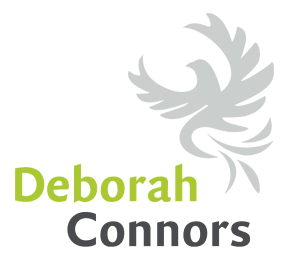
22 Feb 2022: Your Year To Choose Gratitude
“This is a wonderful day. I’ve never seen this one before.”
~ Maya Angelou
I realized the other day that 99% of the time, I find my way back to gratitude—to a grateful mind, a grateful heart, and generally a much more peaceful place. When my days (or moments buried within those days) feel more trying than usual, I notice how I’m able to reach out for what is going well and what I’m thankful for. Again and again, I return to my gratitude practice and have found that it really does retrain your brain and what it accesses. Like those arbutus trees we see here where I live, gratitude teaches you to stretch up through the dark forest undergrowth, upwards for the things that shine. I’ve been learning and practicing gratitude for over a decade now, and the power of it continues to fascinate me!
The word gratitude comes from the Latin word gratia, which means grace, graciousness, or gratefulness. Gratitude is a thankful appreciation in which people acknowledge what is good in their lives, and in doing so, often realize the things that are making their lives positive actually stem from areas outside themselves.
The positive impacts of gratitude have been studied by psychologists like Robert Emmons (the world’s leading scientific expert on gratitude), for decades. In his research, Emmons has shown the numerous physical, psychological and social benefits of practicing gratitude, and how these can have a profound and transformative impact on your life. I personally have found this to be true, and I include discussions on gratitude in many of the workshops I do. Research continues to focus on gratitude in workplaces, highlighting how organizations can utilize this powerful tool to create a culture of gratitude.
Although life is so vastly different during a pandemic, there is still so much to be grateful for. I have been reminded again over these past few weeks that we always have a choice to either respond or react to challenges and upheavals. What we focus our thoughts and energies upon ultimately impacts how we feel, and what direction we’re heading…
Remember that Life is a Series of Choices
Our lives are a series of choices. Sometimes it feels like we’re continually going in a downward spiral (ugh, of course this would happen!), or an upward one (nothing can go wrong today!). When we frame our gratitude practice around the choices we have, we more easily recognize where we’re at, take stock of the path we chose, and take responsibility for our actions. We can choose to invest in the bad things and the fear, where one thought leads to the next, pulling us into those vicious cycles, or we can choose to reframe the situation and invest in whatever piece we can be grateful for. When we focus on what’s going right for us, we can choose to head in a different direction altogether.
Address Your Natural Negativity Bias
Have you ever sat around ruminating about something for hours or days, then suddenly realized how inconsequential it is in relation to the bigger picture? If you have, don’t feel bad—this is actually pretty normal!
Humans are hard-wired to focus more on negative stimuli than positive ones, a factor which is likely the result of evolutionary biology; our ancestors would have needed to pay close attention to small negative cues which could alert them to bigger dangers.
Even though we all have more positive emotions than negative ones, this “negativity bias” means that the negative ones can be so potent that they tend to “take over” our brains. “The mind is like Velcro for negative experiences,” psychologist Rick Hanson is fond of saying, “and Teflon for positive ones.” Of course, our contemporary brains don’t need to focus on the negative stuff, with the exception of actual danger. But while we can replace certain vicious cycles with positive ones, for many of us, this takes practice.
The good news is that a gratitude practice is a great way to shift perception towards naturally seeing the positive more of the time. (Meditation and mindfulness practice can help with this as well.)
A Gratitude Practice Can Help Us See The Good
A gratitude practice gives you the daily permission to articulate or make notes about what you are grateful for, to learn to reframe situations, and to share this in the way you lead our teams and organizations. One of my coaching clients said recently that this practice, without a doubt, is what got her through her first year of starting a new business amidst the pandemic! The daily reframing and taking note of what was good kept her in the right headspace to carry on and be successful. That daily practice of gratitude kept her positive emotion high, allowing her to see more possibilities and be more creative and innovative with her decisions (because these great outcomes are the side effects of increased positivity, along with increased optimism and immunity!)
If you want a record/reminder of how often you are practicing gratitude, just download my cheerful
Gratitude Calendar to keep track by crossing off each day you write down three things you are grateful for!
Gratitude Practice at Home or at Work
I’m really grateful that even during this unusual time, in an unusual world, I can still teach. I can still plan and have big dreams about the transformation of workplaces. Technology allows me to still launch online courses out into the ether to reach people like you who might join in so that I can share what I know to be true: YOU can create a better place to work. Other practices such as learning how to do an effective team debrief and the principles of positive organizing, can substantially change how you lead your teams and your organization.
Another favourite little story of mine about gratitude in the workplace comes from a small software company called Glitch. When the company first began, co-founder Joel Spolsky decided that one of the initial mascots for the company would be a little kiwi bird! The kiwi bird proved to be quite powerful, and the small team embraced the adorable bird; little kiwi bird statues were even given out to employees to commemorate anniversaries. Then, somewhere along the way, everyone at the company started taking some time during their standard meetings to offer their thanks. These public acknowledgements became known as “Kiwi Bravos,” and could include brief, individual thanks to people who helped with technical questions, all the way to broad acknowledgements for an entire team who worked tirelessly on a lengthy support question. The important thing, however, was the overall effect. As Glitch CEO Anil Dash says, “from this comes a culture of gratitude” (Dash, 2017).
At work — just like at home — gratitude can start small, and transform into something quite unexpected!
Where Do You Want To Be This Time Next Year?
We’ve all just ventured into 2022. So ask yourself this: What would you like to be different about your leadership, the positivity of your team, or the culture of your organization in one year’s time? Is this the year when you will choose to create a culture of gratitude?
You can learn more about shifting your mindset and creating a more positive workplace in my online course, Leading A Better Place To Work (Check out this short video to find out more about the course.)
Get started achieving your vision by downloading the Introduction & Chapter 1 from my book (if you like what you’re reading, you can buy the complete book or get a digital version online at Amazon, Apple Books, and other outlets.) Looking for ways to inspire your team? Sign up for our e-newsletter!
Enjoy this article? Here are three more you might like!
- 9 Ideas That Will Help You Create a Better Workplace Now
- Four Ways To Open The Door To Workplace Positivity
- Using the Right Question at the Right Time is a Powerful Way to Shift
Image via Donald Gianatti on Unsplash

